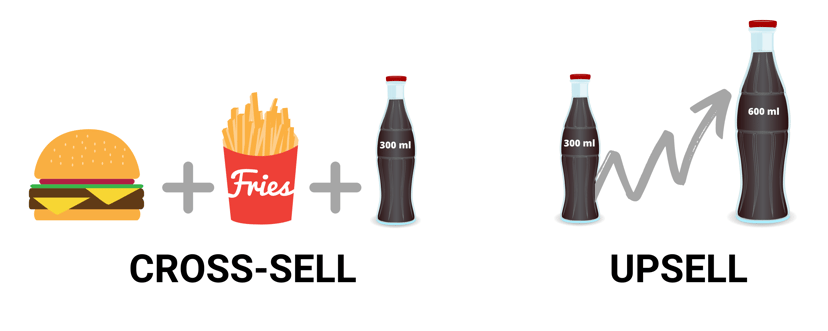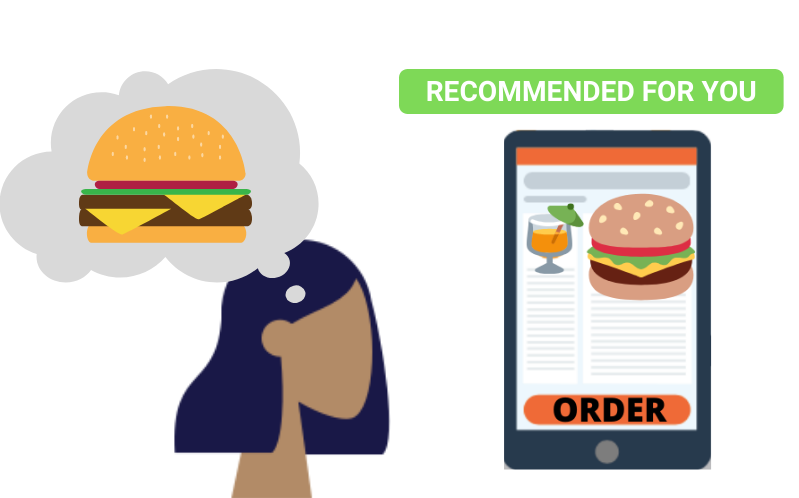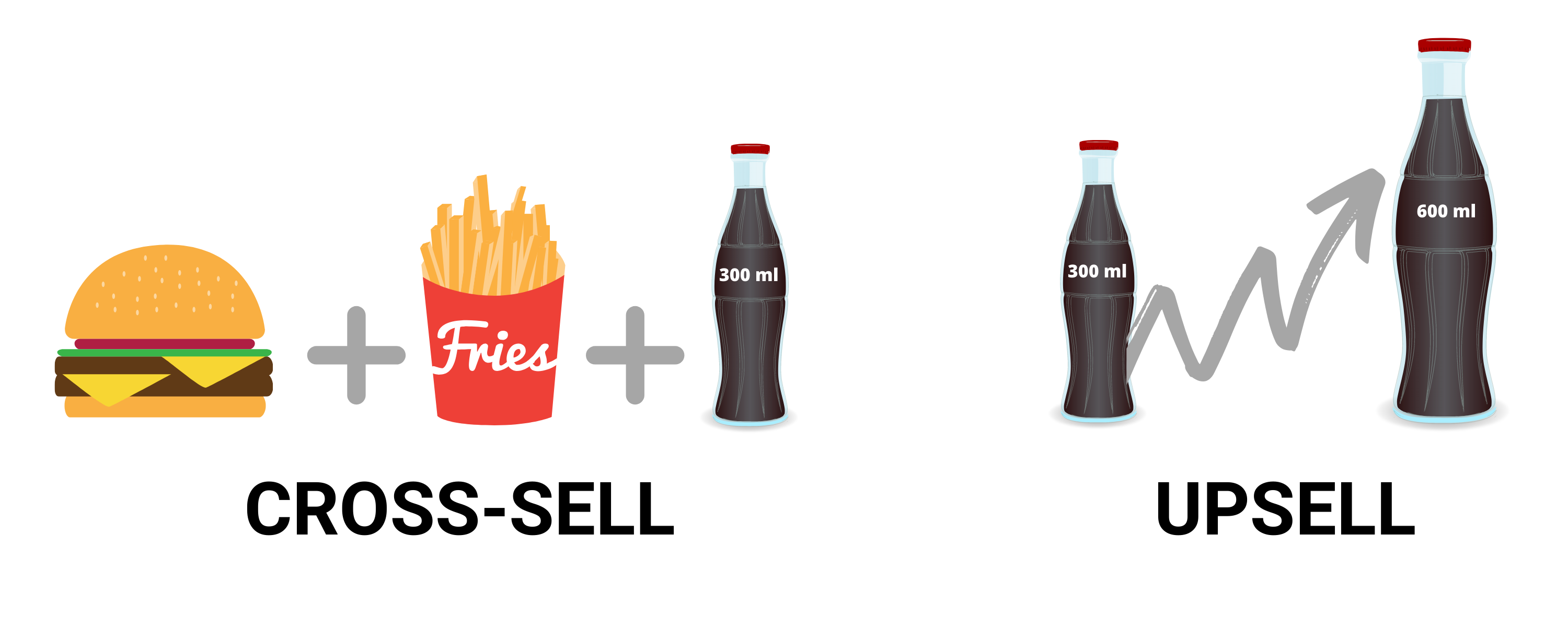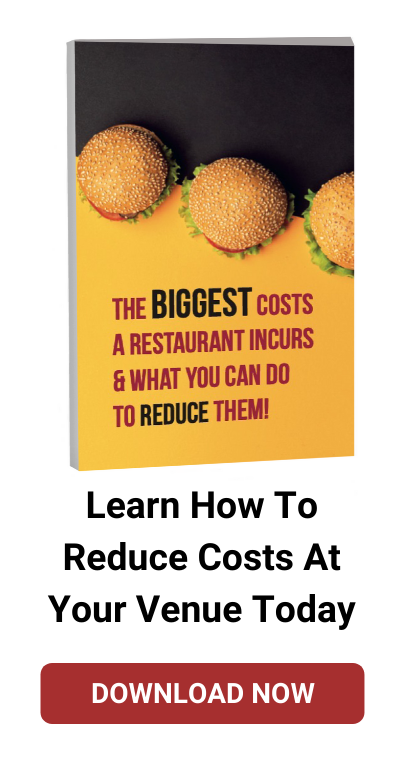Two of the most important strategies to increase sales at food and beverage (F&B) venues are upselling and cross-selling.
These two strategies have a similar goal of increasing sales by providing added value to customers. When executed properly, they can change customer buying behaviours, resulting in increased average spend and overall revenue.
Before we jump in and go through how to successfully upsell and cross-sell at your F&B outlet, let’s look at what the difference between the two is!
Cross-selling
Cross-selling is a technique that encourages customers to purchase add ons that will compliment what the customer has purchased already. The items that are used for cross-selling are often items that the customer would have purchased anyway. The goal here is to recommend the right items at the right time.
Upselling
Upselling is a sales technique aimed at persuading customers to purchase a more expensive, upgraded or premium version of the chosen item or other add-ons for the purpose of making a larger sale.
The difference between upselling and cross-selling
In short – The purpose of upselling is to persuade customers to buy more expensive versions of the product. For example, if a customer orders a small burger combo, the upsell would be persuading them to order a large combo. On the other hand, cross-selling aims to make tailored recommendations of items that will accompany the dish that has already been ordered. For example, if a customer buys a beer, the cross-sell may be chicken wings or a bowl of chips.

Key tips to upsell and cross-sell like a pro
- Always offer the upsell or cross-sell but try not to push sales down your customers throats. Your customers won’t want to be constantly bombarded with upsells and cross-sells. It is imperative to know the balance between doing it well and annoying your customers.
- Make the upsells and cross-sells personalised and relevant. For example, you would not want to cross-sell alcohol to a minor or upsell a product with meat to a vegetarian. For upselling and cross-selling to work, you need to know about your audience.
- Give your customers a sense of urgency. If your product is only available at certain periods of time or there is limited stock, you should let your customers know as this will motivate them to purchase.
- Identify your high profit margin items and push those that will make you the most. It is your goal to suggest menu items that have the best profit margins. This will help you increase average bill values and overall profitability.
- Push your items at the right times. For example, it will be more effective to upsell hash browns during the breakfast period rather than at dinner. Similarly, if you’re suggesting dessert when a customer first orders, this probably won’t be as effective as suggesting it after the meal.
Beyond upselling and cross-selling - Introducing Artificial intelligence promotions!
Artificial Intelligence (AI) promotions are different because they are targeted to each and every customer. This means that your customers will receive a personalised experience with meal suggestions relevant to their taste preferences. Rather than looking at patterns you have seen across the whole venue and customer portfolio, this method is more targeted and has proven to drastically increase average bill values.

The goal of AI promotions is twofold;
- To get the customer that comes in regularly to spend more on their next visit.
- To get the customer that spends a high amount when they visit, but don’t visit often to return more frequently.
These types of promotions aren’t available to everyone, they are only visible for the customers that are logged. Thanks to the power of AI, the system will automatically know which promotion to show each customer profile.
For the customer that comes in often but spends less than the average bill value, a promotion could be as follows. Let’s assume this particular customer’s average spend is $15, the goal here would be to bring up the average spend. A promotion such as ‘Receive 40% off chicken wings when you spend over $25’ could be shown to lift average spend.
For the customer that spends a high amount but doesn’t come in often, the promotion could be as follows. Let’s assume this particular customer comes in once a fortnight but spends $45, the goal would be to get this customer to come in more. A promotion such as ‘On your next visit you will receive 35% off chicken burgers if you come within the next 7 days’. This promotion would have a time limit of for example 7 days, meaning they will come in more frequently than fortnightly if they want this promotion.
These are not your typical marketing promotions and they are very different from upsells and cross-sells that are shown to every customer. These are hidden in the system and are only seen by customers logging in to their profile, activating the AI engine. This type of sales technique works exceptionally well as registered customers spend higher amounts and order more frequently as they are feeling rewarded.
If you are interested learning more about upselling, cross-selling and AI-powered promotions, fill out the form below and get in contact with us!
If you are interested in increasing revenue with smart telling techniques, you are probably interested in learning how to reduce restaurant costs. Download our eBook on how to reduce restaurant costs here and learn more.
Want to learn more about our solutions & what they can do for your restaurant?
Pop in your details below and we will be in touch with you!
.png)


